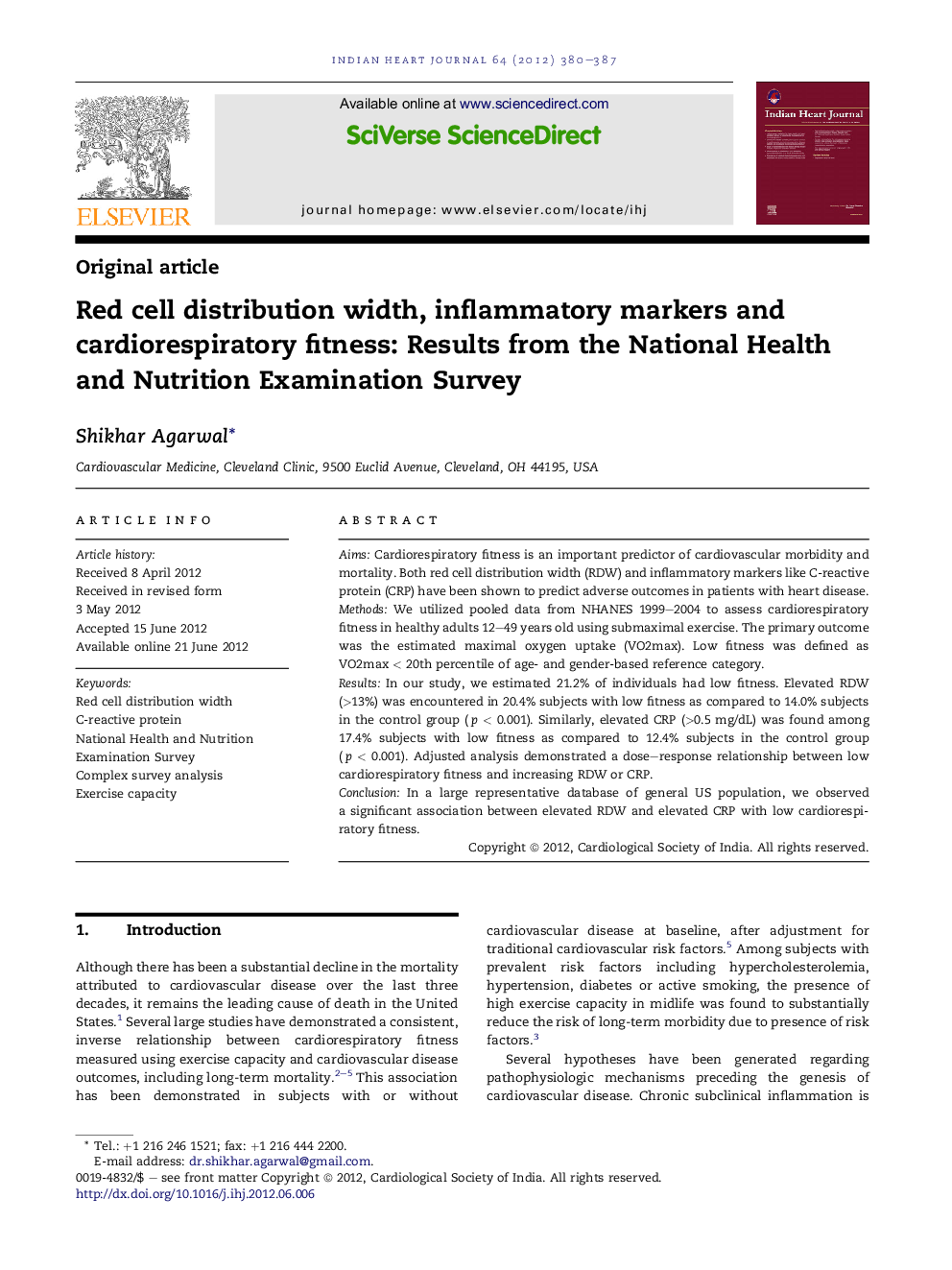| Article ID | Journal | Published Year | Pages | File Type |
|---|---|---|---|---|
| 5962283 | Indian Heart Journal | 2012 | 8 Pages |
AimsCardiorespiratory fitness is an important predictor of cardiovascular morbidity and mortality. Both red cell distribution width (RDW) and inflammatory markers like C-reactive protein (CRP) have been shown to predict adverse outcomes in patients with heart disease.MethodsWe utilized pooled data from NHANES 1999-2004 to assess cardiorespiratory fitness in healthy adults 12-49 years old using submaximal exercise. The primary outcome was the estimated maximal oxygen uptake (VO2max). Low fitness was defined as VO2max < 20th percentile of age- and gender-based reference category.ResultsIn our study, we estimated 21.2% of individuals had low fitness. Elevated RDW (>13%) was encountered in 20.4% subjects with low fitness as compared to 14.0% subjects in the control group (p < 0.001). Similarly, elevated CRP (>0.5 mg/dL) was found among 17.4% subjects with low fitness as compared to 12.4% subjects in the control group (p < 0.001). Adjusted analysis demonstrated a dose-response relationship between low cardiorespiratory fitness and increasing RDW or CRP.ConclusionIn a large representative database of general US population, we observed a significant association between elevated RDW and elevated CRP with low cardiorespiratory fitness.
